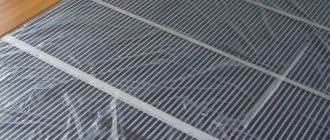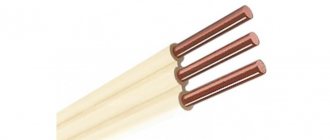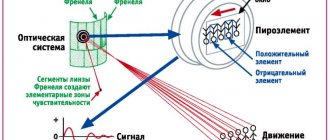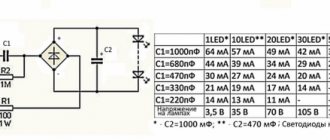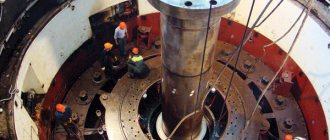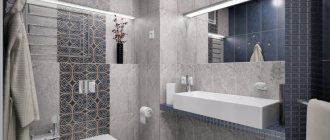The statement that it is impossible to install an electric heated floor in a bathhouse is just a myth. In fact, there is a risk of electric shock, because this is a wet area. However, if you adhere to the technology of all work, then you will not have any problems or difficulties. In this article we will tell you how to implement a heated floor in an electric bath. You'll learn about several great ways.
Is it possible to install an electric heated floor in a bathhouse?
The mere statement that an electric heated floor in a bathhouse can be installed is not enough. It is necessary to study this issue comprehensively. To do this, you can familiarize yourself with the technical characteristics of the heating cable. This type of heating can be used in rooms where the area is small and the ceiling height is up to 2.5 meters. As a rule, a steam room or bathhouse is close to these requirements. It is worth noting that ordinary electrical wiring that is laid in a bathhouse is no less dangerous than an electric heated floor.
However, it is extremely important to strictly adhere to some important tips and requirements for conducting electricity in areas with high humidity. Here are some of them:
- The electrical circuit must be grounded.
- To increase safety, RCDs and automatic circuit breakers must be installed.
- The wire used must have both an external and internal protective coating. On sale you can find a special cable that is allowed for use in rooms with high humidity.
- If large objects, for example, a shower stall, will be installed in the bathhouse, then it is best not to place electric heating under it. This can lead to overheating of the heating circuit.
Advantages and disadvantages of using heated floors in a bathhouse
An electric floor for a bath will be an excellent option, as it has its advantages:
- An electric floor is more profitable than a water floor, since it is not always possible to connect the system to gas. When using an electric boiler it will not be more economical.
- An electric floor can simply be connected to electricity, but a warm water floor requires a whole system: boiler, collector, pump, tank, etc.
- For a small structure, it is not advisable to install a water floor, especially since the bath is heated with steam.
The disadvantages include expensive electrical energy, but the bathhouse is not heated on an ongoing basis - only when necessary. Another disadvantage is electromagnetic radiation. To find out how to choose the appropriate type of heating, you should familiarize yourself with the types of electric heated floors.
Advantages of installing floor heating in a bathhouse
There are a large number of advantages in favor of this decision. And there are even advantages over a similar pipe-based floor heating system. So, among the advantages we can highlight:
- The installation process requires much less time.
- Significantly smaller heating pie.
- Noticeably lower cost of the entire heated floor system.
- The possibility of heating pipes freezing is eliminated, since the bathhouse is not always heated.
Basic underfloor heating systems
There are various underfloor heating systems with their own advantages and disadvantages. Conventionally, they can be divided into two main types:
- Mermen. They are a closed circuit consisting of pipes within which coolant circulates. The movement of liquid is carried out under the action of a circulation pump. The best coolant is water, ethylene glycol, antifreeze or its aqueous solution.
- Electrical. They operate from electric current and are available in several varieties - cable floors and infrared mats.
When solving the problem of how to make a heated floor in a bathhouse, it is necessary to take into account the features of each system. For example, the final cost of water floors is much higher, since for their normal functioning you will have to buy a boiler, circulation pump, pipes and various fittings. The initial costs pay off in about 5-6 years, after which the water floor functions free of charge.
Installation of electric heating is much cheaper, but due to high electricity tariffs, there can be no talk of any savings.
An important feature of water floors is the complexity of installation. Preliminary design and accurate calculations are required. The installation of a mandatory concrete screed does not make it possible to quickly detect leaks and eliminate them in the future. In such cases, it is necessary to dismantle the entire screed, which involves a large amount of work.
In this regard, electric cable underfloor heating differs from water floor heating only in simpler installation. As for repairs, here they are in exactly the same conditions. The cable is also laid in a screed and it is almost impossible to detect a fault without dismantling it. Therefore, infrared film floors are increasingly used, including in the washing departments of modern baths. If one heating element fails, the rest will function normally until repair work is carried out.
Principles of installing a heated floor in a bathhouse
It is also necessary to understand some aspects of how to install an electric heated floor in a bathhouse. The installation of a heated floor directly depends on the location and layout of the bathhouse. As a rule, installation of an electric floor in a bathhouse is carried out in a washing room. But regardless of the installation location, the floors must have high-quality thermal insulation. It will prevent thermal energy from leaking down. Also, the thermal insulation layer will prevent the penetration of cold currents from below. As a result, the possibility of condensation in the thickness of the heated floor pie in the bathhouse is completely eliminated. It is best to use mineral wool, expanded polystyrene, expanded clay and the like as thermal insulation. There must be a reflective layer on top of the thermal insulation.
Important! If your bathhouse has several rooms, for example, a toilet, steam room, washing room, rest room, etc., then an electric heated floor will be installed in these rooms, namely in the rest room and toilet.
Benefits for the bath
Warm floors ensure a comfortable and safe stay in the bathhouse. Underfloor heating is a functional element of the main heating system. It ensures uniform heating of the air - when heated masses rise to the ceiling and cold masses fall down.
Taking into account the design features and layout of the bathhouse premises, heated floors are provided in the washing room, dressing room, bathroom and rest room.
Moreover, any modern underfloor heating system requires preliminary thermal insulation of the base. In this case, a screed is made based on sand-cement mortar or a self-leveling mixture.
In most cases, in addition to thermal insulation of the base, waterproofing is installed. This can prevent the accumulation of excess moisture in the floor pie during operation of the heating system. Polyethylene or polypropylene film is used as a waterproofing material, and polystyrene foam, mineral wool, expanded clay or penofol are used for thermal insulation.
Types of electric heated floors
There are two ways to install warm electric floors in a bathhouse:
- In the screed.
- Under the tiles.
Let's look at the features of these two technologies.
In the screed
If you install a heated floor in a bathhouse with your own hands in a screed, the likelihood of moisture getting into the heating circuit is significantly reduced. In this case, heating mats and heating cables are very popular. They can be laid directly into the screed. The principle of heating is that current passes through a special cable, which generates heat. When choosing an electric heating cable, it is important to pay attention to the number of cores. This wire can be double-core or single-core.
There is also a more modern solution for using liquid electric heated floors. In such a tube the water circuit has no circulation. In this case, heating is carried out via an installed electrical cable. Of course, such a floor for a bathhouse is the safest.
Under tiles
If you have already made a floor screed and you do not want to destroy it, then the electric heated floor in the bathhouse can be laid directly under the tiles. In this case, the installation of the heating circuit will be carried out directly in the tile adhesive. Of course, this method is the easiest to implement, but it significantly reduces electrical safety. Regarding this technology, it is important to take into account some technological features.
First of all, the heating circuit must have a small diameter so that the layer of tiles is also minimal. For this purpose, it is envisaged to use special heating cables of smaller diameter. For example, you can install a heating mat. In this case, the thickness will generally be minimal. There is also a rod heated electric floor, which can be implemented in a bathhouse. Electric current flows through carbon thermal elements. Through this, heat is released. Another original solution is amorphous metal tapes. In appearance, they resemble a regular mesh, which is made of a special quickly cooled metal. Thanks to this, the thickness of the heating element reaches up to several millimeters. This material is characterized by a low level of electromagnetic radiation and high energy efficiency.
It is worth mentioning another type of heated floor that can be laid under tiles in a bathhouse - infrared film. But in this case, the use of bimetallic tape is allowed. It combines an alloy of copper and aluminum. When current flows through them, they emit heat. But it is worth noting that this heating is used extremely rarely in a bathhouse.
Comparison
For comparison, only the heating cable and amorphous tape remained.
This will look more clearly in the table, provided that the comparison is made not in absolute criteria, but in relative ones. That is, relative to each other.
| Heating cable | Amorphous tape | |
| Working temperature | 50–80˚C | 38˚C |
| Increasing floor height | Minimum 4 cm (1 cm cable 3 cm tie) | 0.2 cm (thickness of mat with amorphous tape) |
| Actual heating area, relative to the floor | 1–3% | 20–30% |
| Zebra effect | Present | Absent |
| Heating rate/thermal inertia | Medium/high. To reach the operating mode, you need to heat the screed layer. | High/absent. |
| Energy consumption (all other conditions being equal for power and operation) | High | Low. Compared to the energy consumption of the cable system, it is 40–50% lower. |
Regarding uneven heating, it should be explained separately. In the cross-sectional image of an electric heated floor, it is clearly visible that the amorphous tape heats up at a lower temperature of the working element, but at the same time the area is much larger than that of the cable.
This figure schematically shows the principle of formation of the “Zebra” effect. The fact is that the minimum distance between the turns of the cable is 8 cm. And to the floor surface is at least 4.5 cm (3 cm minimum screed thickness 1 cm tile thickness 0.5 cm thickness of the adhesive composition).
The temperature sensor is located between the turns of the cable, at an equal distance, that is, approximately 4 cm.
We invite you to familiarize yourself with the Brick shield for a metal stove in a bathhouse
At a superficial glance, the heating rate should be the same. But according to the Debye model (1912), during heat transfer, the phonon energy is weakened when moving from one medium to another. And in this case, there is a transition of thermal phonons from the screed to the glue, then to the floor covering.
If you increase the thickness of the screed so that the heating is uniform, this will increase the energy consumption and inertia of the structure.
A thinner screed will not be able to perform protective functions and at the same time the likelihood of cracking is much higher.
From all the above factors, it follows that the use of amorphous heating tape when organizing an electric heated floor in a bathhouse is the only investment option to achieve the optimal balance between price, efficiency and reliability.
Installation of cable heated floors
Now we invite you to consider the instructions for installing a warm cable electric floor in a bathhouse. The peculiarity of installation work mainly comes down to the type and type of ceiling. If the ceiling is wooden, then fire safety standards must be taken into account. Wooden structures must be treated with fire retardants. It is clear that it is important to prevent direct contact of the cable with the tree. Moreover, each connection is carefully insulated.
The principle of installing a cable heated floor in a bathhouse comes down to the following steps:
- First of all, high-quality preparation of the base is carried out. This includes waterproofing work. The thermal insulation layer is also laid and only after this the electric heated floor is installed.
- To simplify installation, you can use a heating mat, which is combined on special mats in the form of a grid. On these mats, the cable is laid at a certain pitch, so you don't have to do any calculations.
- When laying the cable, be sure to maintain a distance of at least 50 mm from the wall. If there are any heating structures in the bathhouse, for example, a fireplace, then the electrical circuit of the heated floor should be located at least at a distance of 100 mm or more from it.
- When laying, make sure that there are no kinks in the cable. Tension should also be completely eliminated.
- As soon as the heating circuit is evenly laid on the floor in the bathhouse, it is connected. Once connected, do a test check. This will allow you to identify possible defects.
- Next, the reinforcing mesh is laid out and everything is filled with screed.
- After one month, the screed will acquire sufficient hardness. After this, you can lay the tiles.
Features and installation options
The installation of cable heated floors and infrared film has its own differences. Before installing any system, proper preparation of the working surface is a must. This process is necessary not only for high-quality installation of the system, but also for its safe operation.
Preparing the base
The floor for the bathhouse is made using a screed. If work is carried out on the ground, then a rough coating is required.
The floor screed consists of the following layers:
- waterproofing layer – polyethylene film;
- insulation – polystyrene foam, mineral wool or expanded clay;
- heat reflective screen;
- reinforcement – metal mesh.
An example of an electric heated floor in a bathhouse.
After laying such a cake, a screed is carried out. To prevent cracks from occurring later, it is recommended to fill a layer of at least 5 centimeters.
Laying cable floor
Installation of a cable-type electrical system in a bathhouse must be carried out strictly in compliance with all safety measures. Particular attention should be paid to wooden floors during installation. All wooden parts must be carefully insulated. It is also recommended to treat them with fire retardants.
To install cable heated floors you need:
- The heating system is mounted on a prepared base, which includes a thermal insulation and waterproofing layer.
- Before installing the cable, you should install the thermostat. The device has a special outlet for grounding connection. Since the bathhouse is a room with high humidity, it is necessary to install a protective shutdown device with automatic switches.
- For installation, you can use ready-made mats with a built-in cable. In these thermal insulation boards, the conductor is placed at a certain pitch, so installation is much simpler.
- If special mats are used, then there is no need to take measurements, since the cable is already installed in them at a certain pitch. To lay electrical wires manually, a special foil backing with markings is often used.
- The cable is laid at a distance from the wall of at least 5 centimeters. It is imperative to maintain a distance of more than 10 centimeters from any heating devices.
- The electrical cable must lie without tension. It must be installed according to a pre-planned scheme. During installation, avoid kinking the wire. It is recommended to save all drawings for the location of the cable system. This will allow you to drill a hole in the floor without any problems in the future during repairs or arrangement of the bathhouse.
- After installing the heated floor cable system, initial testing of the device is carried out. A complete check of the operating process of the electrical circuit allows you to determine the quality of the equipment installation.
- The reinforcement in the form of a mesh is laid out on a properly designed contour heating system. Next, the floor is poured.
The floor covering can be installed after the screed has completely cured. It is recommended to lay the tiles after thirty days.
Installation of infrared floor
The film floor heating system is a less powerful heating equipment, but it is safer and goes well with wood-type coverings. Before installation work, as in the first case, the foundation must be prepared. In this case, materials are used that protect against moisture and a thermal insulation coating.
The process of laying such a heated floor system has the following features:
- Infrared film is evenly laid out on a properly designed surface. Scotch tape is used to secure it to the floor.
- The film thermal device is covered with a special mesh on top. An adhesive solution intended for flooring is applied to it, which should completely and evenly cover the surface of the film.
- Next, you can finish the bath floor.
Infrared heated floor
The film-type heating system can be started after the adhesive solution has completely hardened. Before laying the finishing coating, be sure to check all heating equipment.
Installation of infrared heated floors in a bathhouse
Now we will learn about how to make a warm floor in a bathhouse based on infrared heating. Using this electric heating has its advantages. Thus, they are characterized by lower power, as a result they can be ideally combined with wooden floors. The height of the heating cake is also significantly reduced. But the speed of all work can be reduced to 5 days. The process of performing all work is reduced to the following sequence:
- First of all, the floor is prepared, which includes leveling the floor, laying a waterproofing and thermal insulation layer.
- After this, roll out the infrared film. To prevent it from moving during further work, secure the film to the floor with tape.
- Next, place a special mesh on top, onto which you apply an adhesive solution for installing the floor covering. It is important to ensure that the film is completely hidden under the layer of solution.
- After this, the facing material is installed.
The advantage of this system is that such heating can be put into operation immediately after the tile adhesive has hardened. As a rule, this does not take much time.
Warm floors made from infrared film
As already noted, infrared film flooring is the best option for rooms with high humidity. Easy and quick installation allows you to assemble and connect this system in a bathhouse with your own hands. This ensures high electrical safety and reliable tightness of structures. The height of the heated floor in the bathhouse after all the work will be no more than 2 cm.
The installation sequence will be as follows:
- First, standard base preparation is performed.
- Next, rolls of carbon film are rolled out and fixed to the base with tape or special tape.
- A mounting mesh is placed on top of the film, onto which an adhesive solution is applied, completely covering the heating elements.
- After this, floor tiles or porcelain tiles are laid.
The heating system in a new bathhouse can be operated immediately after the tile adhesive has completely hardened within the time period indicated on the packaging.
The installation of a heated floor in a bathhouse, in addition to having its own characteristics, belongs to the category of expensive work. But it has significant advantages: the ability to maintain a favorable temperature in the room, as well as a positive effect on wooden and finishing elements. You can install a heated floor in a bathhouse with your own hands; all you need to do is know the installation technology and have all the necessary tools on hand.
Security measures
Of course, installing an electric heated floor in a bathhouse requires strict adherence to safety precautions. After all, there is always high humidity in the bathhouse. So, in order to prevent any problems, it is important to adhere to the following precautions:
- It is unacceptable to install it under furniture or other large objects that will interfere with good heat transfer. Otherwise, it may cause the heating element to overheat.
- While pouring the screed, make sure that there are no air pockets in the screed.
- To ensure that the temperature sensor can be easily changed, be sure to place it in a special corrugation.
- When installing a heating cable, be sure to connect it to grounding.
- To connect electric heating, an RCD must be installed on the electrical panel.
- The thermostat for a heated floor must have sufficient protection from the negative effects of moisture.
Creating a water floor
Metal-plastic pipes for heated floors
Water heated floors in a bathhouse, its structure is similar to a standard heating system:
- The boiler operates and heats up the coolant.
- The pipes are arranged according to a special design. The coolant circulates through them.
- A prerequisite is the presence of a pump.
Suitable types of pipes for creating a designated floor:
- made of metal
- made of plastic
- made of copper
- made of metal-plastic
- corrugated
Thermal carriers can be water and antifreeze.
Water is most often used. But if there is no heating in the bathhouse, then it may freeze. Therefore, in such cases, antifreeze for heating systems is immediately used. If this is not done, you will have to repair the water-heated floor technology. This will take a lot of effort and money.
Its repair is very difficult. This is one of the main disadvantages of this technology. Other shortcomings:
- Big expenses.
- Calculation and installation of increased complexity.
- A very difficult process of temperature control.
And its advantages are:
- Modest operating costs.
- Decent reliability.
